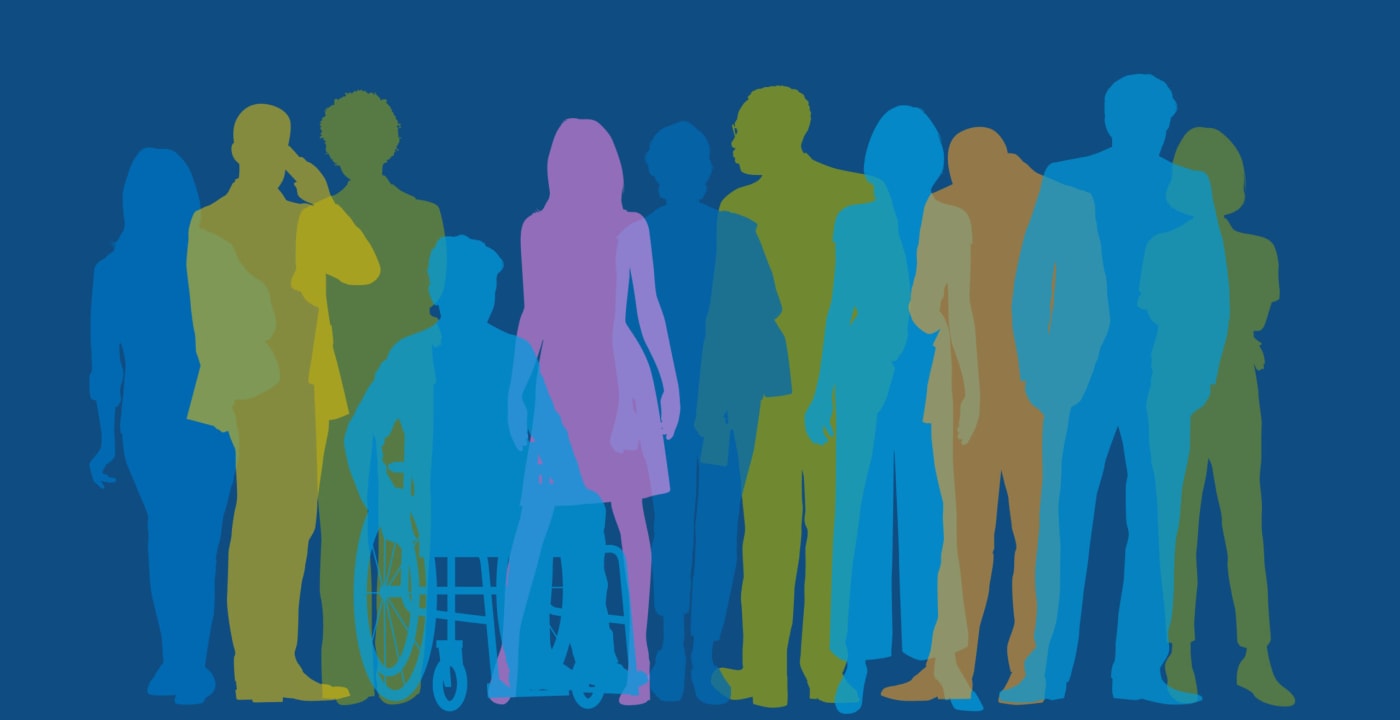Hidden health disparities of Native Hawaiian, Pacific Islander communities

At a glance
- Native Hawaiian and Pacific Islander health outcome data has been hidden for decades
- Immigration status, insurance availability and language/cultural differences play role in health care access
- NH/PI communities face many challenges, including highest levels of food insecurity
At MultiCare, we are committed to working toward health equity — ensuring all people have access to quality health care regardless of age, race, ethnicity, gender identity, religion, sexual orientation, ability, socioeconomic status or location.
But we also recognize the reality that longstanding biases and barriers embedded in the health care system, and our society, can prevent people from accessing the care they need.
In this series — inspired in part by society’s growing awareness that not everyone has the same chance to be healthy — we take a deeper look at the disparities that impact our patients and how we as health care providers and community members can reduce those disparities and improve the health and well-being of all.
Dividing AAPI for better representation
The United States government created the term AAPI (Asian American Pacific Islanders) in the early 1960s to collect data from these populations on everything from food insecurity to housing and health.
While “AAPI” was created with the intention of better representing the roughly 65 ethnic groups included in this term, in reality it’s had the opposite effect, explains Tanya Velasquez (she/her), MA, associate professor at the University of Washington and co-principal investigator for the AAPI THRIVE Project. Consolidating so many different populations under one umbrella hides their unique experiences.
Many communities now push for a more granular and representative approach to research with the use of the terms A/AA (Asian and Asian American) and NH/PI (Native Hawaiian and Pacific Islander).
In this second of two articles, we’ll cover health disparities faced by the NH/PI community.
Communities overlooked
The consolidation that came with the term AAPI made the challenges experienced by the NH/PI communities invisible, says Kiana McKenna (she/her), director of policy and civic engagement, Pacific Islander Community Association of Washington (PICA). Historically, data wouldn’t have been helpful because the numbers don’t support the lived experiences of these groups.
The COVID-19 pandemic surfaced such an issue. In 2020, COVID-19 was eight times as deadly in the Washington state NH/PI community and resulted in 11 times the hospitalizations compared to white and A/AA communities, McKenna says.
Washington was one of only a few states to break down its data in such ways, meaning health care and community leaders could see the differing outcome, she adds. With NH/PI people making up only 0.8 percent of the state population, compared to 10.5 percent A/AA, these outcomes would have otherwise been missed.
NH/PI breakdown
- Includes individuals from Hawaii, Samoa, Tonga, Chamorro, the Marshall Islands and Fiji, among others
- 1.7 million NH/PI in United States (2021 census)
- ~110,000 NH/PI in Washington, the third highest state (USA Facts)
When McKenna joined PICA in May 2020, the NH/PI population was experiencing almost 70 percent COVID-positive cases. Through system advocacy and community organization, that number dropped to less than 5 percent, she says.
But why was this number so high initially?
“It’s not because the community wasn’t responding or adhering to guidelines,” she says. “But the system was not built for the community. [It’s] a system we can’t thrive within.”
Unique disparities
Immigration status
A significant issue that many NH/PI individuals face regarding access to health care is a result of immigration status and what kind of care and insurance they can access.
For example, Spokane is home to the second largest Marshallese community in the country. Many Marshallese people who move to and work in the U.S. do so under the Compact of Free Association (COFA).
“They pay taxes but are not citizens, so they don’t get voting privileges or many social services benefits,” McKenna explains. “Even though Medicare and Medicaid exist for low-income families, it was only in the last three years that it become more available under COFA.”
COFA, which was enacted after nuclear testing in the islands, has impacted generations of families, says UW professor Velasquez.
“We did that, and all that support is dried up now,” she says. “The number of disparities and health inequities resulting from that has been hidden for so long.”
Individuals moving to the U.S. from Guam experience similar challenges, explains Ronnie San Nicolas, PhD, assistant teaching professor for the UW School of Social Work and Criminal Justice and mental health coordinator for AAPI THRIVE.
San Nicolas is a Guam native whose father worked on a U.S. military base. As a resident of the U.S. territory, his mother had health care insurance through her husband, but as her health declined, San Nicolas moved her to the Pacific Northwest. The problem: Her coverage doesn’t carry with her to Washington.
“There will be a difficult navigation if she stays here to get care, which she needs to do,” he says.
Much of our country’s current health and benefits systems are organized by “who is belonging,” says Velasquez. For example, because A/AA and NH/PI individuals haven’t always had access to citizenship legally and socially, they haven’t had access to health care and other benefits either.
“Considering our political and military presence in Guam, the least we could do is to honor her health insurance here,” she says. “But it’s part of that history of erasure and exclusion.”
As of 2018, roughly 9.4 percent of NH/PI individuals did not have health insurance.
Language and cultural differences
Another challenge adds McKenna: The U.S. doesn’t treat health care as a fundamental right. That’s especially evident in the ways U.S. systems are not set up to accommodate different languages or cultural beliefs.
“We have horror stories of translators contracted by organizations who don’t speak the native tongue … elders stuck in the emergency room with no translator or anyone to talk to,” McKenna says. “We have to invest in equitable solutions, or we won’t see equitable solutions.”
In its traditional system, Velasquez says health care often fosters what is known as the “white savior” perspective — where traditionally white/Eurocentric organizations or institutions may be perceived as thinking they know best or must help save other populations.
It’s often easier for health care organizations to say, “If only they would overcome their own cultural barriers, because we have the best answer,” says Velasquez.
“Really, it should be the reverse,” she explains. “If only Western medicine would open up their way of thinking and updated their books and trainings.”
San Nicolas explains a pilot project he led in Hawaii between 2003-2007 with the Substance Abuse and Mental Health Services Administration (SAMHSA). Their goal was to implement a Western model of care around illness management and recovery. The team quickly learned it was not going to work the way they thought.
“That was one of the most exciting moments as a social worker and Pacific Islander, to learn about Hawaiians and the ways we could take an illness management recovery model and — through a process of working with that community — we ended up developing a really beautiful model and delivering a beautiful intervention,” he says. “Not one size fits all. So often we’re giving what we think works best without listening from the other culture.”
Social determinants of health
Outside of health care, many social determinants of health and well-being for the NH/PI community have also been hidden.
“Our communities are extremely food insecure, and we know that food is at the center of wellness,” McKenna says. “Thirty-four percent of NH/PI households utilize food stamps, and this community has the highest level of food insecurity of any ethnic community.”
Many also live in large, multigenerational households, lack access to affordable housing and hold very low rates of home ownership.
Additionally, there are higher rates of alcohol dependence and drug use, as well as suicide. In the academic setting, kindergarten readiness is much lower than other communities. NH/PI communities have the third highest rate of discipline in school and second lowest graduation rate.
Many health care systems, including MultiCare, are working toward collecting data on social determinants of health to better understand health and quality-of-life outcomes, explains Deana Williams (she/her), PhD, MPH, research investigator at the MultiCare Institute for Research & Innovation.
This is an important step, but to truly move the needle, health care systems must work with impacted communities to address the root causes of inequities, she says.
Looking to the future
The community at large needs to put more effort into engaging with their NH/PI neighbors, McKenna says. A mutually beneficial and transparent relationship should be the goal, not just learning about them.
“I intentionally sought out an Asian doctor for my mom because growing up in Guam, Asian and Filipino were the second most predominant groups,” San Nicolas says. “I was luckily able to find someone in my area for her who could understand the complexity of her health-related issues and had the bedside manner she needed.”
It’s faster to build trust if providers look like their patients and their families, speak their language or have common knowledge of the culture, Velasquez says. There’s a shortage of representation, though, especially with mental health providers.
Patients should be part of the solution — the key is not underestimating the value of relationship building, McKenna says.
“For me as a community member, when we think of our [NH/PI] community, we think of resiliency,” she adds. “We’re rich in culture and values of family, community and service.”




